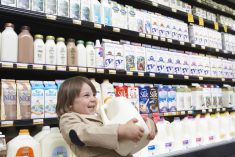The dairy sector seems set to stabilize in 2024 amidst high processor demand and leveling-off input costs, Farm Credit Canada says.
“It has been a volatile few years for dairy producers but 2024 is shaping up to be calmer – a return to a more normal environment, if you will,” wrote Graeme Crosbie, a senior economist with the ag lender, in a Feb. 8 article.
He named feed prices and availability; butter stocks; and retail demand and inflation as the top economic trends likely to impact the sector this year.
Read Also

FCC forecasts rocky financial year, points to waning confidence, vCOOL, interest rates
Farm Credit Canada forecasts trade woes, interest rates contributing to deceleration in the Canadian economy in 2026.
“Feed availability and pricing will be the ultimate determinant of profitability in 2024,” Crosbie wrote.
A large U.S. corn crop in 2023 lowered prices and put downward pressure on feed wheat and barley, despite drought that limited production, he said. Record imports of U.S. corn to Western Canada has continued to keep a lid on feed prices, though prices remain elevated.
FCC forecasts feed costs to be lower in 2024 but trend higher throughout the year.
Hay prices, meanwhile, will likely be “stickier” in the west, Crosbie said, and producers will be hoping for spring moisture.
At present, low snow levels look to exacerbate already dry conditions in much of the west.
Butter stocks are relatively low compared to recent history, Crosbie wrote.
“Low butter stocks leave little room for error should production not meet anticipated demand,” he said.
More incentive day announcements may be forthcoming for producers, he added.
Demand for dairy appears to be holding up fairly well despite stressed consumer budgets. One reason, Crosbie wrote, is that dairy price increases were lower than many other major food products.
For instance, overall beef prices rose nearly 11 per cent year over year, chicken rose by almost five per cent year over year, and fresh fruit rose more than three per cent.
Butter rose over six per cent, Crosbie said, however milk rose less than two per cent, and cheese prices rose a bit more than two per cent year over year.
While farm gate dairy prices are set to rise in May, dairy product prices are forecasted to increase a fairly modest 1-3 per cent, Crosbie wrote.
Interest rate cuts are anticipated in the second half of the year, he added. However, profitability in the west will likely be contingent on growing season conditions.
















